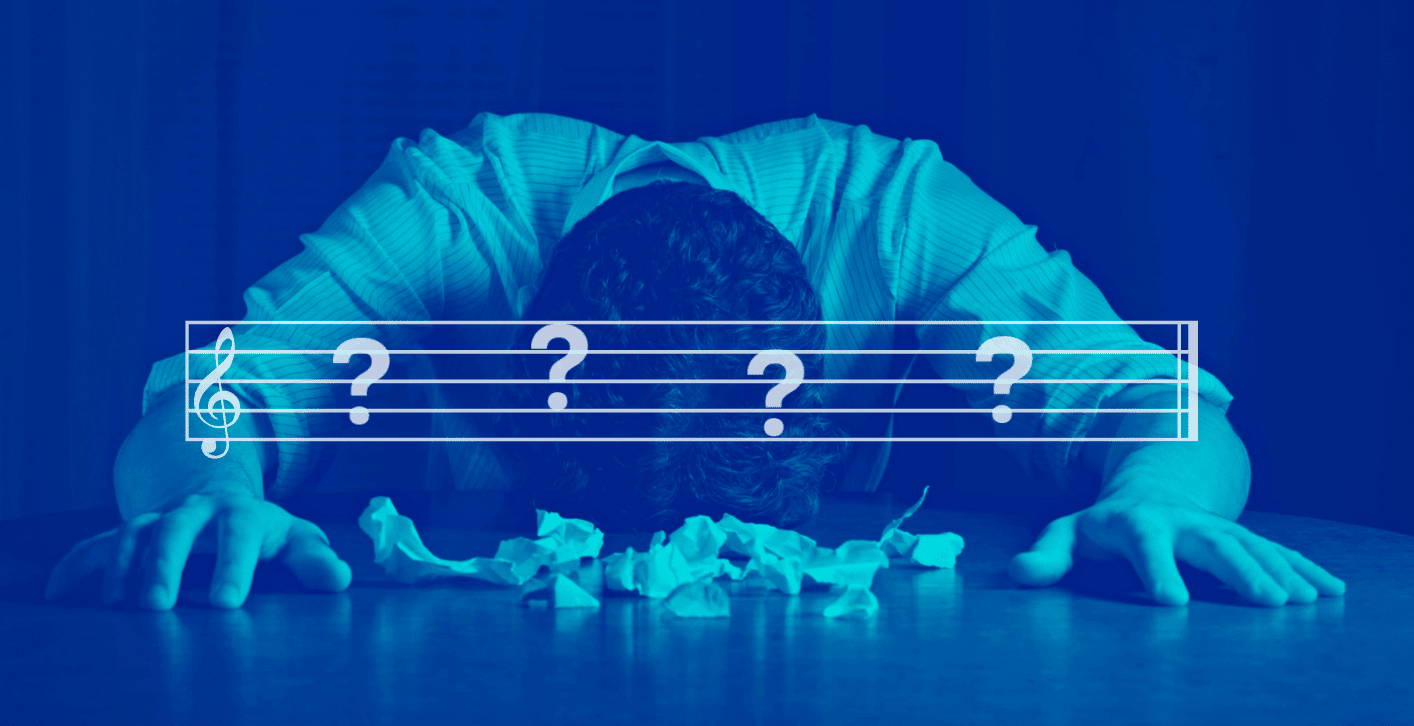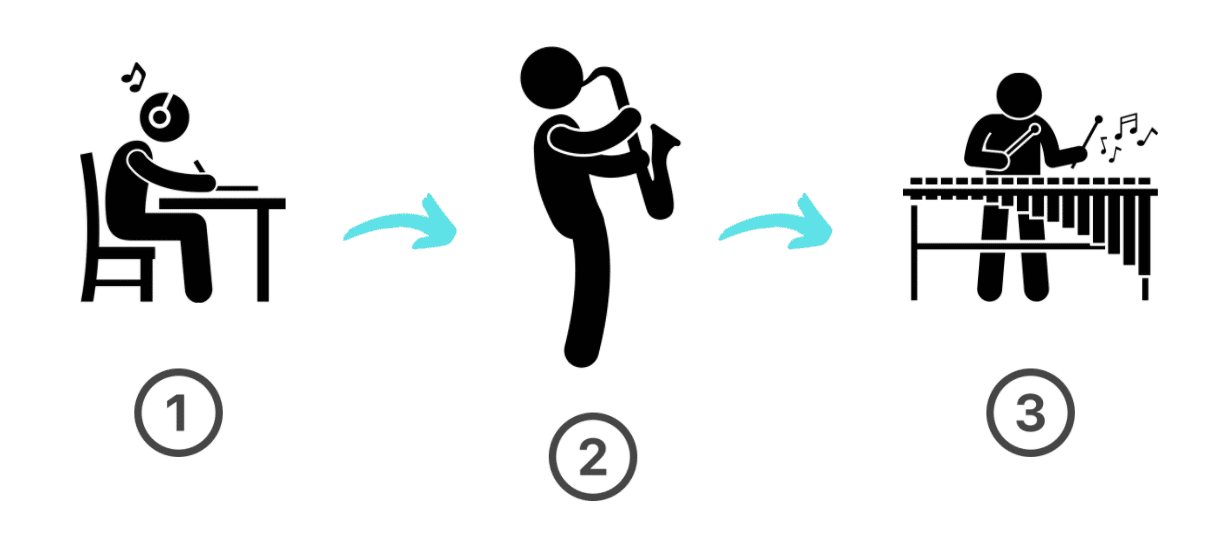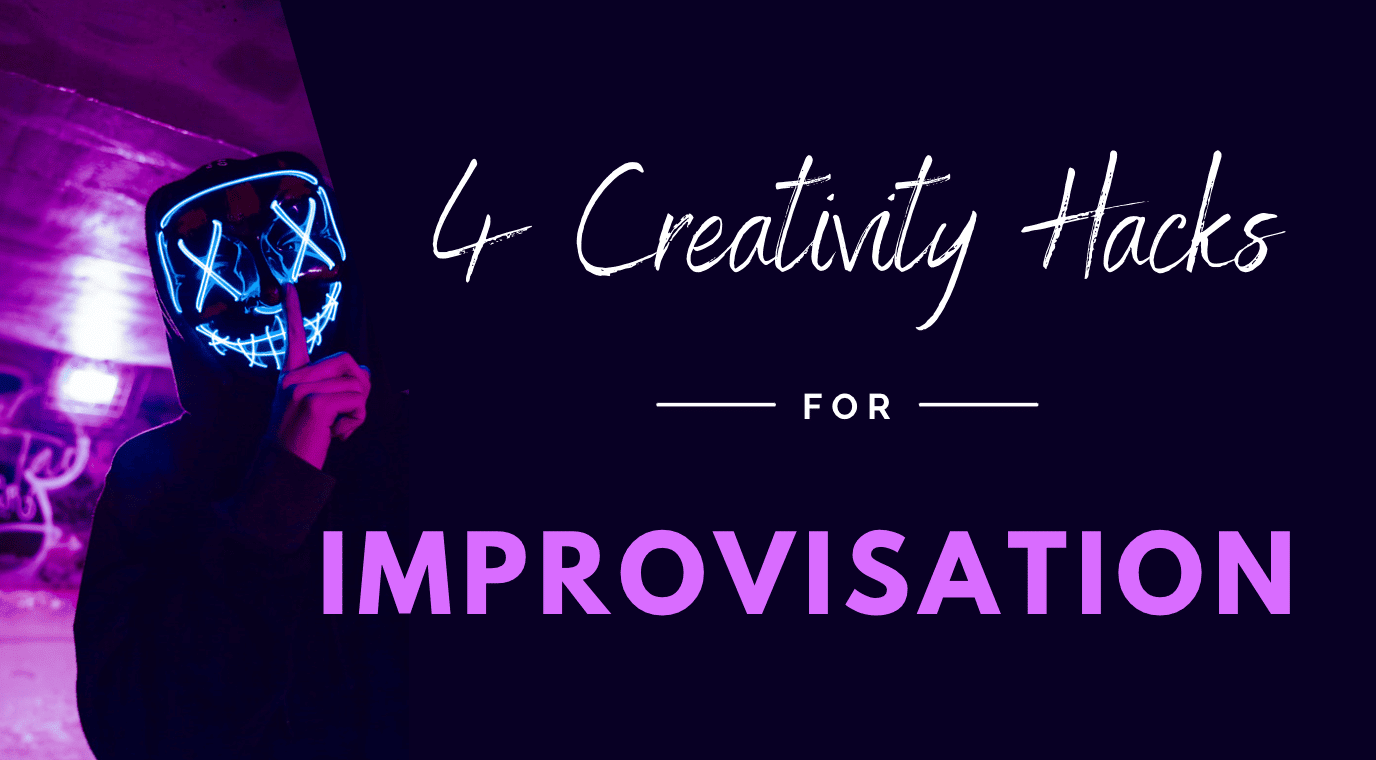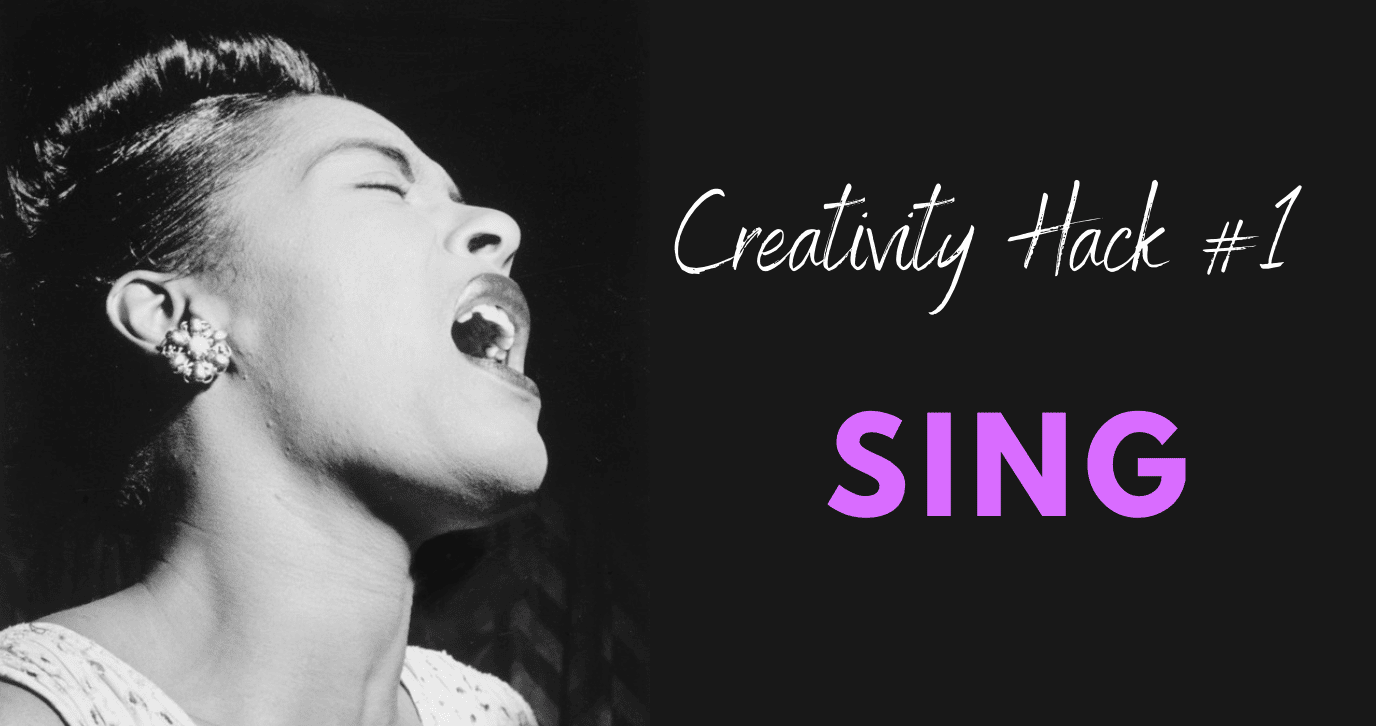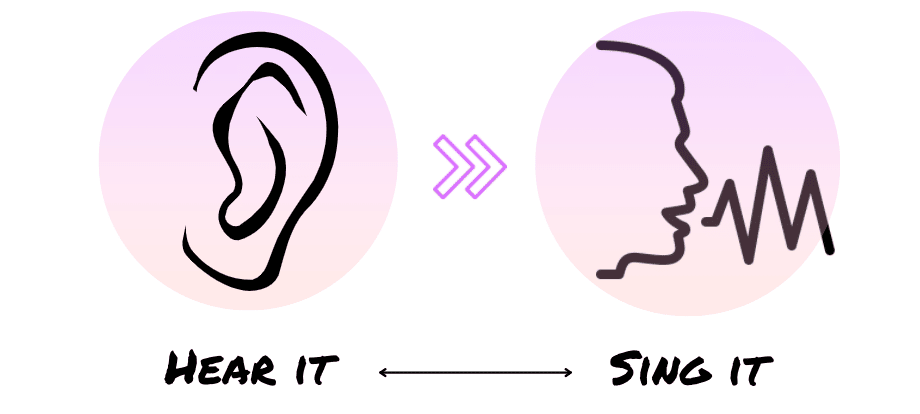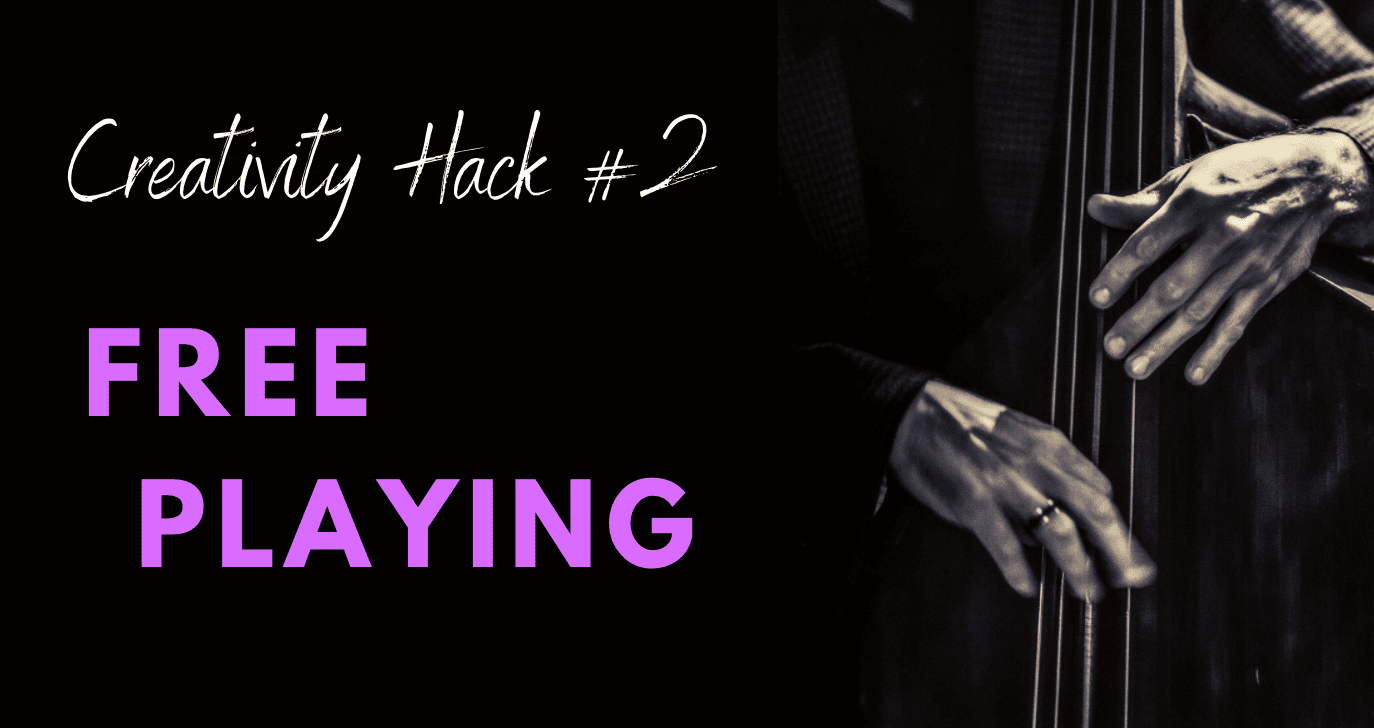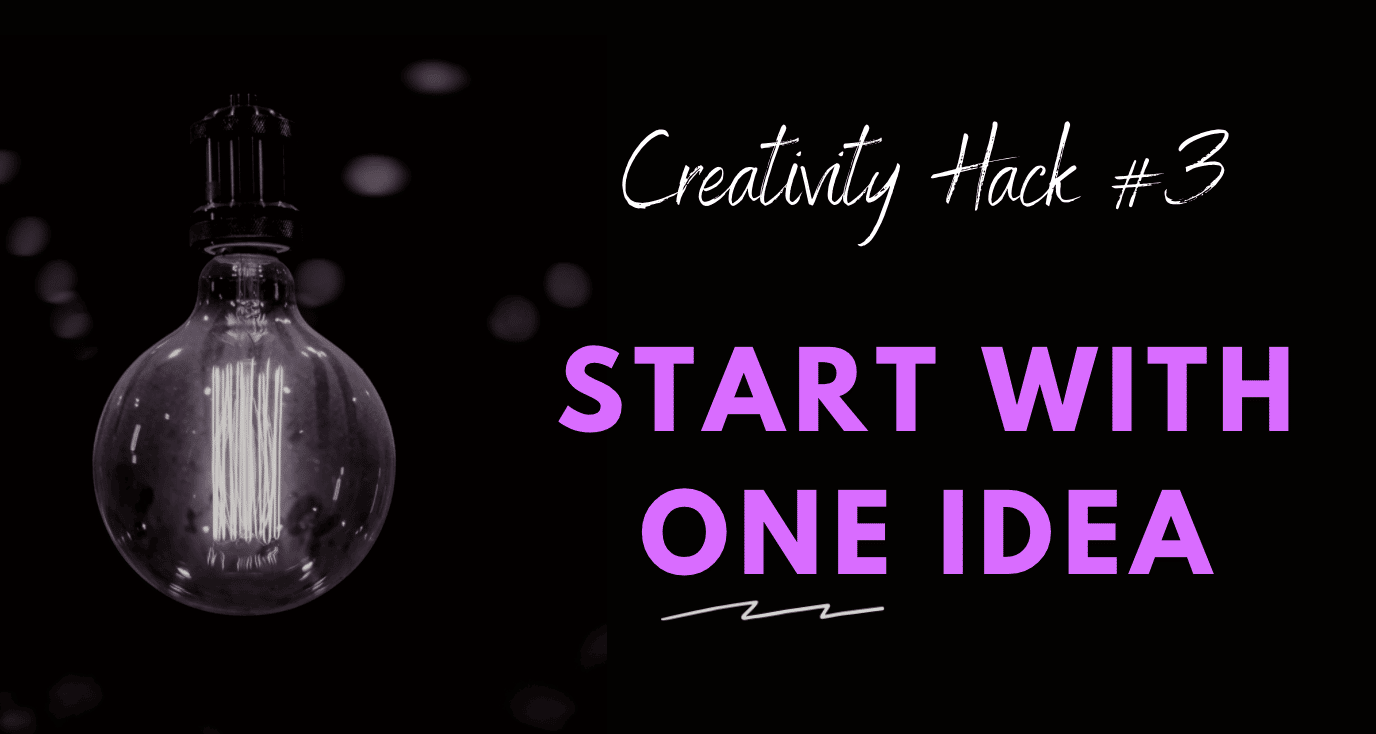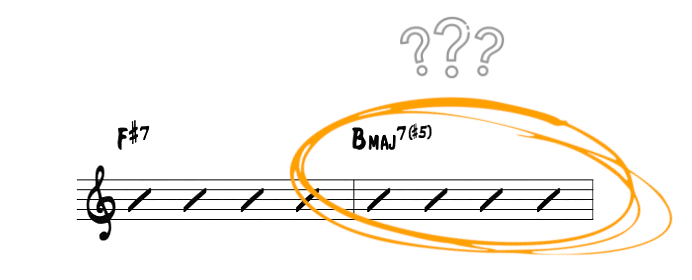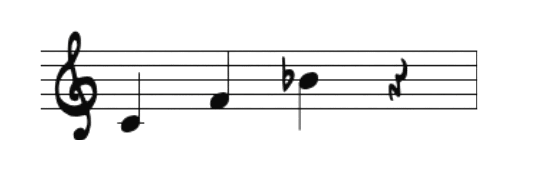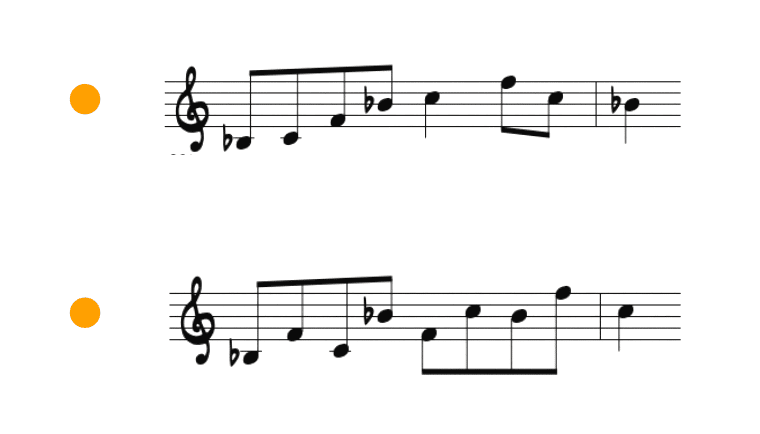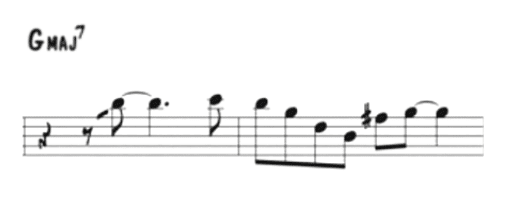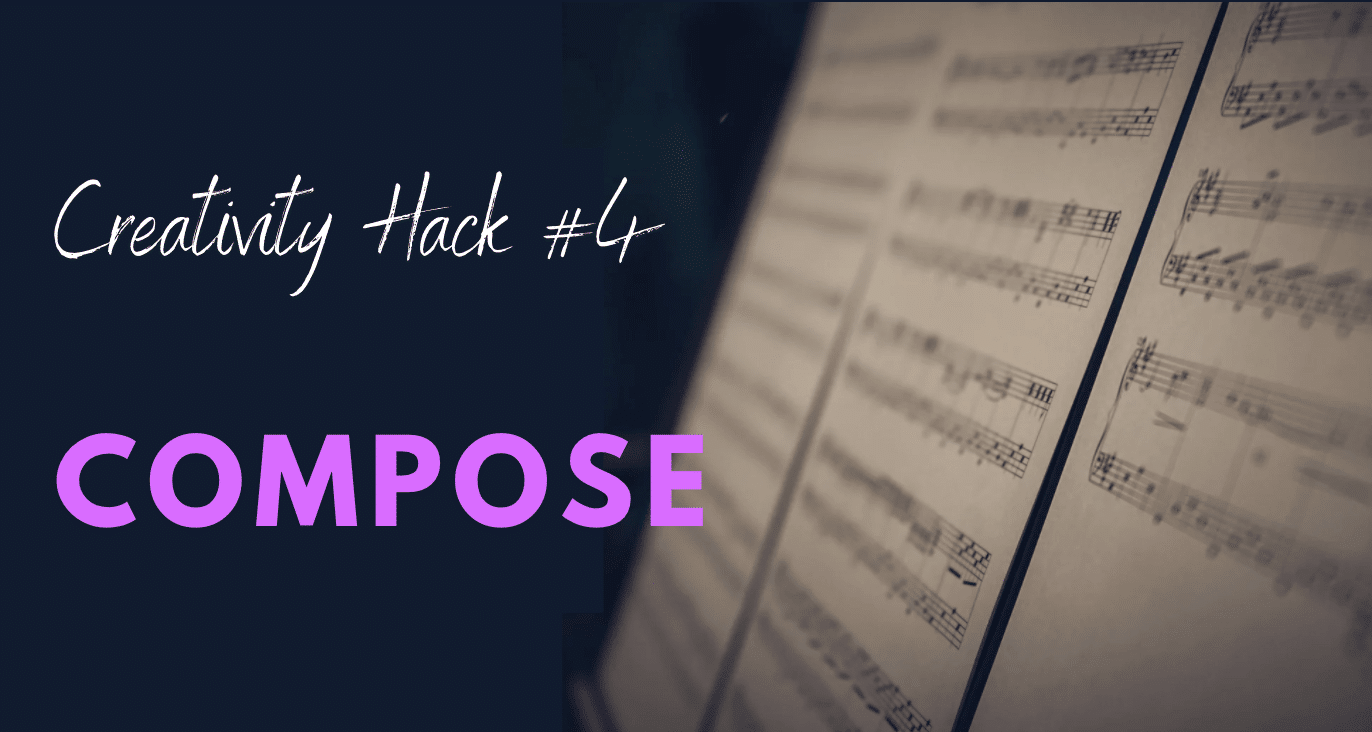If you’re reading this, I’m guessing you spend your fair share of time in the practice room honing your musical skills. All in preparation for that moment when you can close your eyes and begin improvising your own musical ideas…
Everyone knows that practice is an essential part of daily life as a musician. However, not all practice routines are doing nearly enough for your skills as an improviser, especially when it comes to the art of being creative.
You see, practice at its core is an activity designed to instill habits – and this can be a great thing for developing technique and improving as a musician. But, these same activities can also slow down the growth of your innate creative instincts.
You may have noticed this trend in your own solos…
Even after practicing for hours a day, it can still feel like you aren’t actually ‘improvising’ or playing your own musical ideas. That you’re learning lines and techniques and plugging in licks and language, rather than creating an original solo.
From the vantage point of the practice room, it’s easy to forget one simple fact – that creativity and improvisation are skills, ones that we need to touch upon each day.
That’s why in this lesson we’ll show you where the average jazz practice routine is holding you back and the 4 practice hacks that’ll turn your creativity around…
The pitfalls of the typical “jazz” routine
So where do we all go wrong?
Why does even the most rigorous routine fall short of the creative skillset we need to play a great solo?
Well, it just so happens that the type of practice required for playing an instrument at a high level or for soloing over a chord progression is pretty specific…
And for good reason! Without a certain set of skills, you’re going to have a tough time getting the right notes out of your instrument, let alone improvising melodic lines over a jazz standard.
However, repeating the same exercises or routine day after day, no matter how beneficial for certain parts of your playing, can unconsciously put you into a creative rut. You’re essentially training yourself to play the same thing over and over again – the opposite of what you’re going for as an improviser!
This is the conundrum we face as improvising musicians. You can do everything right in the practice room – listening, transcribing, learning language, practicing technique, learning tunes, mastering all keys – yet still fall short of being creative or producing your own original ideas.
The way you improvise is a reflection of what you practice. If you only run exercises, scales, and specific lines, this is what you’ll draw from when you solo. The solution to becoming more creative in your solos is incorporating more creative exercises into your practice routine.
It’s a given that you need to cover certain areas in the practice room, but if you aren’t consciously devoting practice time to the specific skill of improvising, you’re cheating your creative potential.
3 Pillars of practicing jazz improvisation
For a moment, let’s zoom out and take a bird’s eye view of a jazz musician’s practice routine. From this vantage point, the ideal routine for an improviser consists of three big categories…
-
- Absorbing the information: Listening, memorizing tunes, studying chords & progressions, transcribing solos, figuring out chords, training your ears, learning music theory and harmony.
-
- Building the technique: Learning to play these things on your instrument. Learning transcribed lines, playing through chord progressions, applying language to tunes, running technical exercises.
-
- Creating your own music: Taking all of these tools and techniques and creating your own music. Playing the ideas you’re hearing in your head – not rehearsing lines, but getting into the headspace of improvisation.
In this big picture practice view, most of us are great at covering the first two areas – studying information and ingraining it on our instruments.
We faithfully practice scales, learn tunes, and transcribe lines, but we never get around to that crucial 3rd step, taking all that information and technique we absorbed and going the extra step with it.
What many of us think of as “improvising” is actually still step number two – repeating lines, thinking about notes and scales over chords, placing certain licks over specific parts of a progression. Mental information that we think through and try to execute on our instruments at the right time and place…
Improvisation doesn’t have to be left up to chance and creativity doesn’t have to wait until performance or when you play with other people. It can and should be developed in the practice room.
So how do we develop this creative side of our playing on a consistent basis? Well, it means that we have to adjust how we practice…
4 Creative Hacks That Work
The goal for any improviser in the practice room is to get beyond routine, repetition, and the well worn paths of the stuff you know so you can actually unlock your creativity…
Uncovering what you’re hearing, what you’re feeling, and delving into the musical possibility of the unknown.
Below we’ll show you 4 practice tactics that will help you incorporate that missing 3rd practice element into your daily routine so you can start developing the creative aspect of improvisation.
Let’s get started…
1) Start Singing
The first step in reconnecting with your creativity is singing…
Singing?? you might ask. How does singing make you more creative or help you improvise on your instrument, especially if you’re not a vocalist?
Well, it’s easy to forget that singing is one of the easiest and most direct ways to access your inner creativity…and it’s something that a lot of us ignore when it comes to a practice routine.
You see, the act of singing connects you with your ear and your inner voice on a physical level – the internal source of your musicality and creative ideas.
Without this vital connection, music becomes an external process. It exists as notes, lines, chord symbols, and the ingrained mental information that we learn – the reverse of what should be happening.
This disconnect between the knowledge of music and the sound of music is exactly why many players feel separated from the creative process and have trouble improvising their own musical ideas.
Remember, the voice is your most natural form of music making and the beautiful thing is, it doesn’t require you to worry about keys, chords, notes, fingerings, or technique to produce a sound…
With your ear and your voice, you’re focusing solely on the sound of music, without all of that mental clutter getting in the way. And this is precisely the place where you want your creative ideas to arise from…
In reality, the practice of singing isn’t just a vocal exercise, it’s the practice of isolating and connecting with your internal music.
The eventual goal when we are playing our instruments is to make it feel like singing, this is the voice and feeling that we want to come out of our instruments.
At the most basic level, you need to connect the external sound of music to your inner ear and physical voice, seamlessly connecting them as one.
In other words you need to be able to hear something and effortlessly sing it. Give it a try with the audio clip below, listen to the 3 tones and repeat them with your voice:
This might seem basic, but it is the vital first step into turning all of that mental information you’re learning into physical sound that you can easily access – a skill that you should be reinforcing everyday.
Next, with that connection established begin singing the melodies to simple tunes and standards.
Don’t worry so much about the notes, the key, or the chord progression, the objective here is to internalize the sound of the melody and recreate it with your voice. Try it with jazz standard like Ceora:
As your ear and vocal connection improve try singing more complex ideas, step by step. For example, try listening and singing the melody to Bird’s Cool Blues:
Do this same exercise with any line that you’ve transcribed or solo that you’ve learned.
Make a physical/aural/vocal connection to the sound so that it transcends all the mental clutter of theory or the confines of your instrument. Maybe you’ve been learning the Miles solo on So What – listen to it, internalize it, and sing it:
The goal is to not just think of these phrases as notes in relation to chords, but entities and ideas within themselves.
Finally, you want to be able to hear and sing the melodic ideas that originating within yourself – not just repeating the notes you are hearing. chord tones,
A great way to do this is with a drone tone:
As you listen to this background reference point, what melodies are you hearing, which chord tones, etc. See if you can accurately and confidently sing the notes and ideas you’re hearing – this is your creative voice!
Another great exercise for this connection is to sing along with a recording and improvise with your voice. Many times when we listen to a recording and imagine what we’d solo, we immediately think about chords or scales or the progression…this time I want you to think about what you are hearing:
The truth is, your singing voice is your improvising voice…both come from the same place. The more you sing and strengthen this physical connection to sound, the more you’ll improve the creative flow and musicality of each solo you play!
2) ‘Free’ Improvisation
Do you remember that feeling as a child where you took out a blank sheet of paper and a crayon?
…there was a world of possibility at your fingertips, waiting for you to bring anything in your mind to life. No rules, no fear, and no judgement – just imagine it and draw it.
This is the feeling that we want to remember and tap into when we improvise! However, the unfortunate thing is that this mindset often gets lost in the drills and strict outlines of a practice routine.
If you’re approaching practice like most players, you need a yin to balance out the yang of all the rigid rules and repetition. The goal is to break the guard rails and guidelines for a moment and get back to the simplicity of making music with our imagination.
This means allowing some space in your practice time to simply follow your intuition, trusting any idea that pops up and seeing where it goes.
The first step in breaking the routine of doing the same thing everyday starts with your mental approach. Start fresh, be present, and listen to yourself.
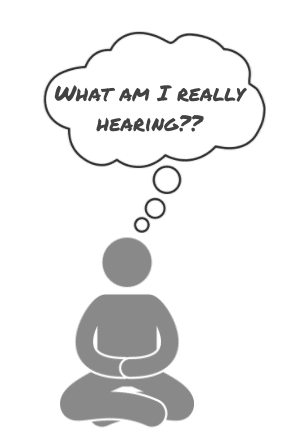
A great exercise to combat this tendency is to take a few minutes at the start of your practice time or solo to clear your mind & meditate.
Take a moment to pause, to listen to what you’re actually hearing, and to think about what you want to say musically. This could be as simple as 5 minutes at the start of your practice session, or simply asking yourself before a solo “What am I trying to say or do here?”
Now it’s time to return to the feeling of looking at that blank sheet of paper, but this time with sound…
Without relation to a chord, a tune, a key or chord progression, simply play. Play a note, an interval, a melody or anything that you’re hearing and see where it takes you.
Get away from the habit of “I’m playing this tune that starts on this chord and this note.” After you’ve cleared your mind, strive to play something you’ve never played before
Simply quiet your mind, close your eyes, and play.
There are no wrong answers or mistakes here. Get accustomed to the feeling of truly improvising – of opening your ears and mind and going with the flow.
Sometimes it can be tricky to just play freely and conjure up musical lines, and this is where a musical prompt can help.
One useful exercise for opening up your ears and developing your own melodies is using a drone tone:
Hearing this background tone, what melodic ideas pop into your ear? A note, an interval, a melodic phrase?
Simply start singing and then play exactly what you are singing on your instrument.
In the same vein as a drone tone, introducing the element of time can spur on your own creative musical ideas.
Turn on a metronome or use a rhythm or drum truck and see what melodic or rhythmic ideas you start hearing…
Again, whatever ideas you hear or sing, try to play them on your instrument with the same “musical voice.”
As you play freely, it’s also helpful to think in large ideas rather than individual notes…
What are the big picture things you want to convey? Which musical emotions and sounds are you hearing and feeling?
Think in terms of: Slow, fast, smooth and lyrical, intervallic, dissonant, consonant, soft, loud, long notes and phrase, short, peaceful, agitated.
Here the notes don’t matter as much as the intent behind them. Your sound, your feel, your style, and expression are coming to the forefront….
You can also apply this approach to tunes that you’re bored with or having trouble soloing over. Rather than applying your usual licks use this big picture mindset and see where this leads you.
While you might not be playing completely free over jazz standards, this practice approach will help you develop a musical perspective and approach that isn’t based on notes or theory.
3) Start with a simple ‘seed’ idea
One sticking point in learning to improvise that’s often missed is the fact that complexity or too much information can kill your creativity…
You see this all the time with musicians learning to improvise. Armed with a few scales, they get thrown right into the fire tackling entire tunes, chord progressions, multiple keys, and .
And it’s not just players starting out. Many times the “headspace” we are improvising from is an entire tune, multiple chords, and complex harmonic or melodic concepts…
There’s so much information to digest that it’s all we can do to simply keep up and play the “right” notes – forget about creating music.
Creativity thrives when we have space for ideas, room to stretch out and take chances, a place to experiment and move at our own pace.
Rather than trying to tackle the everything at once in the practice room and expecting creative fireworks – take one piece of the puzzle, isolate it, and get creative with it.
To begin, rather than tackling an entire chord progression step back and pick one chord quality or sound to focus on at a time. Start with the basics (Major, minor, V7, half-dim, etc.)
Isolate this sound, play it at the piano, ingrain it in your ears and sing melodic lines that you’re hearing over it.
Not only is this a great exercise for the basic chords you’ll find in any tune, but especially those chords you aren’t familiar with or can’t seem to figure out what to play over…
Use a background track or simply play freely within this frame work. The goal is to isolate this one sound and actually get creative with it.
In a melodic sense, start with the building blocks and begin with a sense of freedom and creativity…
Use a simple melodic device like an interval, triad, or a very basic melody as a creative starting point. For example, you might focus on a sequence of 4ths:
Now how can you improvise with something as simple as an interval and start developing your own creative ideas?
Look at these intervals in different inversions and within the entire range of your instrument:
You can even add other notes as you improvise and imply an specific chord:
Endless musical ideas from one simple intervallic starting place…
Language is another great starting point for developing ideas and playing with creative freedom.
Take one line that you’ve learned or transcribed and use it as. For example, you might take this one line from Sonny Rollins solo on Pent-Up House:
Using this line as a starting point, how can you shape this idea in your own way? Rhythmically, harmonically, melodically…
Take the musical concepts and sound of this original line and create your own music!
Rather than tackling an entire tune, isolate one progression and really explore the sound and movement of it, slowly. For example you might isolate the movement of V7 to I.
Start with a very simple melodic starting place like resolving 7 to 3, or 3 to 1. Then see where that leads you, arpeggios, alterations, more complex melodic ideas, applying ii-V’s, etc.
The idea is that from these simple seed ideas, using your ears and imagination, you’ll naturally come up with variations which will spin off into your own ideas. One simple starting point leads into creativity, rather than the common problem of information overload killing creativity.
4) Compose music
There’s a well known expression that says “composition is improvising in slow motion…”
And this couldn’t be more true when it comes developing the creative side of improvisation. As an improviser you should also be trying to compose musical ideas as often as you can.
This doesn’t mean that you have to write an entire symphony, a set list of original tunes, or even an in-depth composition – it simply means that you are devoting time to creating new musical ideas, new chord progressions, and new sounds.
Remember, composition comes from the same place as improvisation – listening to and zoning in on your inner-voice and the ideas you are hearing in your head.
Each day take 5 minutes and try to come up with one simple melodic idea. It doesn’t have to be complex, long, or even something that you are going to save or perform.
Just get in the habit of clearing your mind, zeroing in on your inner voice and ear, and letting the process happen. Write down your ideas, no matter how small or seemingly insignificant.
In the same way that you are composing melodic ideas, you should also be focusing on harmony as well…
Find one chord that resonates with you and explore this sound. Focus on the sound of the harmony and then figure out what you’d call it in relation to theory.
Then try to hear where this chord leads to – if this sound was in a chord progression, what would it resolve to?
Finally, don’t forget about the rhythmic element of music and the role time plays in your experience of sound.
Along with melody and harmony, you should be focusing on time as well. With the melodic or harmonic ideas you are composing also incorporate a rhythmic element.
What is the time signature of the melody you are writing? What type of groove goes along with the chord progression you’re working on? Sometime you can start with a rhythmic idea or pattern before you come up with a melody…
A Creative approach to practice
Creativity is like anything else in your playing…
If you want it to be a lasting part of your musical approach, you need to consciously add it to your playing everyday.
It’s the same for language, harmonic concepts, and instrumental technique…it’s not going to magically show up one day because you want it to.
The good news is that every player has creative potential, if they put in the work.
By implementing these 4 creative hacks into your daily routine, you’ll see a noticeable shift in your approach to improvisation – one that is centered around creativity.

